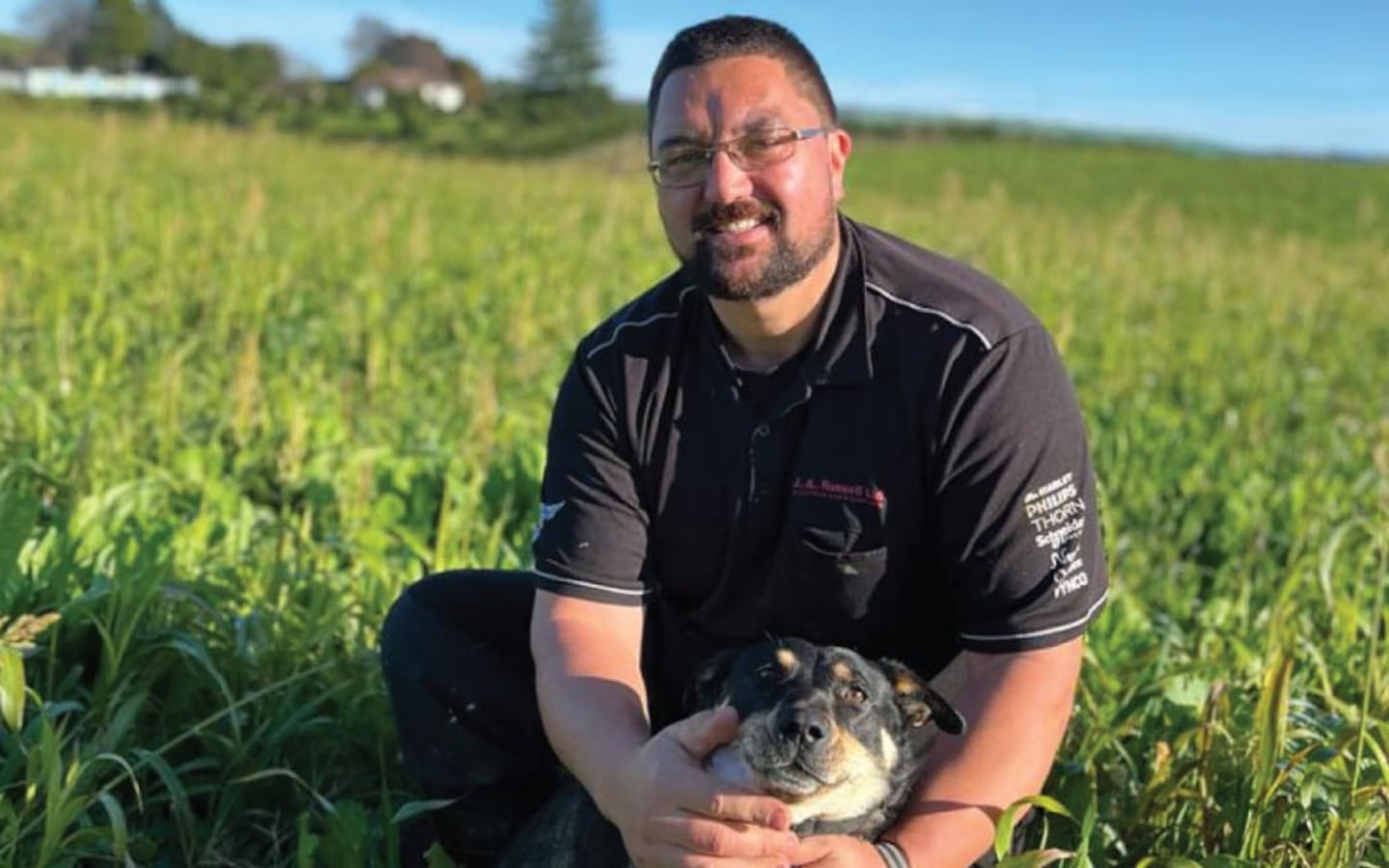Through the “beautiful wet season” that Mohi Beckham calls the past 18-months, most of the paddocks were underwater on the coastal Bay of Plenty farm which he manages.
However, the paddocks that survived were those with diverse pastures, he says. The others were left looking brown and rusty.
“I’m still learning,” he admits.
“But that is one thing I have noticed.”
To no surprise, it’s raining on the Otamarakau farm when Country Life visits to talk about the regenerative journey Beckham has been on for the past five years since being on farm.
Rolling paddocks that lead the eye to the sea are the backdrop of the 220-hectare farm. Around 170 hectares are used for the dairy operation which sees over 400 cows milked.
However, when Beckham first arrived it was not a pretty picture.
“It was pretty run down, we didn’t realise how bad the state of the place was until we actually came on farm to check things out,” he says with a cup of tea in hand.
“Grass was nearly waist high across the whole farm of straight Kikuyu. People think that is a lot of feed but you would probably get more nutrition from cardboard, to be honest.”
Beckham says cows had to chew it down which meant they lost some condition. However, when spring arrived they were able to sow seed in the ground of different pasture species.
“We were farming for survival,” Beckham says.
With a season under their belt, cracks started to show. Survival mode was wearing thin and Beckham was feeling the effects.
“I was always miserable, and I didn’t know why. We live on a beautiful farm and a beautiful whare, but I was miserable.”
Beckham says he met with a counsellor who helped him unlock belief systems from his childhood which he had buried.
“I came home and to be honest, a bit of a tear time. I went into the paddocks and I was crying for a bit. But I realised what we were doing to our bodies I was doing to the soil.”
In other words, Beckham felt he was not nurturing the foundation of any farm - being the soil - and he was also not nurturing his own needs.
However, his eyes opened to what it was his mum had tried to teach him when he was younger.
He realised the answer lay in her lessons.
“Regenerative farming wasn’t a word back then. To this day those gardens at the family homestead, [there’s] topsoil from here to Africa, deep as. The food’s beautiful but everything was just compost. Everything was organic matter, and love and karakia.
“To me, I understand that way of farming.”
Beckham says he understands the other way of farming too and fertilisers are still used on farms when needed.
However, this moment marked the beginning of the regenerative journey for Beckham. It seeks to build a more resilient farm ecosystem from the soil upward.
Beckham says he sees the soil as being like our blood, the foundation. And by creating better soil it creates better plants and better feed for the animals.
“It’s been pretty amazing what has happened on farm. It’s not just even at the grassroots level or the money level.
“It’s the people, their wellbeing, our mental health really changed and it was actually quite amazing that it’s actually a whole system thing.”
The journey for Beckham led him to start up a gym at the back of his house for anyone who wants to join. Farmers, Fonterra reps, and the local vet all come along to blow off some steam, get off farm and enjoy a chat.
“That’s where the word diversity comes into play. Instead of one guy working by himself, there is a connection there. When you’re isolated, like a lot of farmers are, you have just got your own thoughts and you kind of get a bit stale.”
Diversity is also essential in the paddock, Beckham says.
“Imagine if you only ate weetbix 24/7, that would suck. But that is how I saw the cows, and that can’t be healthy.
“So I took that on board and realised that the health of the plants was a lot more vigorous. Because of the diversity, the microbiome of every plant, they share with each other what is needed.”
But it doesn’t stop there. Beckham started to look to the sky to help him on land.
He learnt about the maramataka, the Māori lunar calendar. Literally meaning ‘the moon turning,’ it is the traditional Māori way by which time was marked.
Instead of following the movement of the sun throughout the year, iwi communities in history noted the movements of the moon over a typical month and year.
“Most people probably go off the fishing calendar, which is the maramataka. People made fun of me following the maramataka for growing but they’ll go fishing on the high energy part of the lunar phase.
“The moon gives off different energy at different times of the month. Certain parts of the lunar phases is when it’s a good time to grow, or good time to plant and other times is not so much,” he says.
Beckham hired riparian planters, continuing his regenerative model, to plant out the waterways.
However, with the maramataka up his sleeve, he instructed them when the best days were to work, and when they could have the day off.
Beckham says the proof is in the data.
“I think it was like if you have an 80 percent survival rate, you’re doing really well, and the conventional guys were getting that.
“We were sitting around a 93 percent survival rate of plants. Instead of a 20 per cent loss, you’re getting a seven percent loss. You put that into a dollar figure, it’s quite a lot. It’s a massive difference.”

